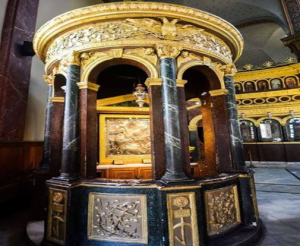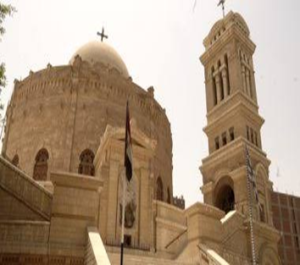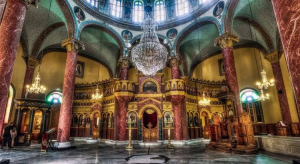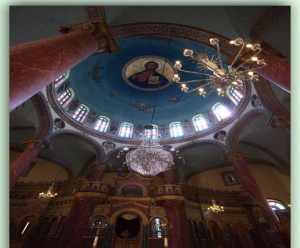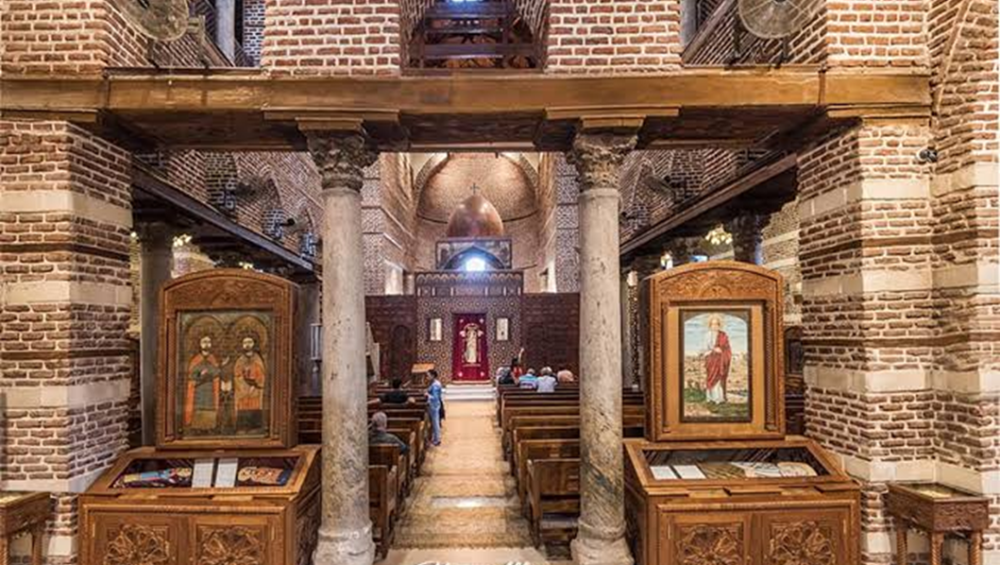Churches in Old Cairo
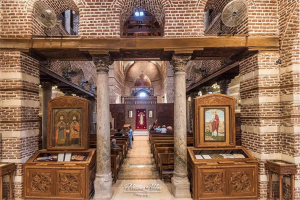
The Hanging Church
The Hanging Church is situated in the ancient district of Cairo, now known as the Religious Complex. This area is one of the most significant and historically rich archaeological sites. It is called Old Cairo due to multiple fires that forced the city’s inhabitants to abandon it. The church’s official name is the Church of Saint Demiana and the Virgin Mary. It is called “Hanging” because of its unique construction, built atop two towers of the renowned Babylon Fortress.
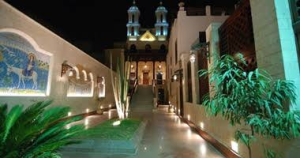 Saint Demiana is one of the most famous martyrs in Egypt, a victim of the Roman Empire’s persecution of Christians. Unfortunately, she lived during the reign of the Emperor Diocletian, a time known as the era of martyrs or the era of great persecution. After converting to Christianity and with her mother, Marcus, building a monastery for her and 40 other virgins to worship, they fell victim to the cruelty of the emperor’s soldiers. All were killed and burned, making Demiana one of the most celebrated martyr saints in Christianity.
Saint Demiana is one of the most famous martyrs in Egypt, a victim of the Roman Empire’s persecution of Christians. Unfortunately, she lived during the reign of the Emperor Diocletian, a time known as the era of martyrs or the era of great persecution. After converting to Christianity and with her mother, Marcus, building a monastery for her and 40 other virgins to worship, they fell victim to the cruelty of the emperor’s soldiers. All were killed and burned, making Demiana one of the most celebrated martyr saints in Christianity.
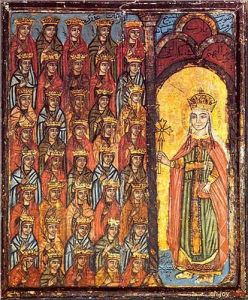
reasons for the Hanging Church’s Fame
The Hanging Church is renowned for several reasons:
• First Papal See in Cairo: It served as the initial papal seat in Cairo.
• Center of Theological Education in Egypt.
• Numerous patriarchs from the 11th and 12th centuries were interred within the church.
• The church uniquely possesses over 110 ancient icons, contributing to its historical and archaeological significance.
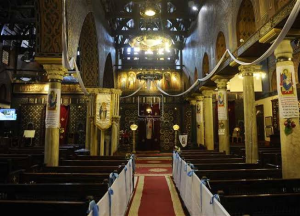
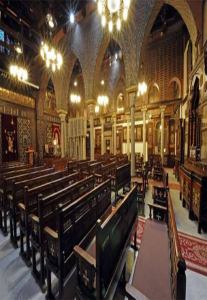
Description of the Church
The Hanging Church was constructed in the basilica style, comprising three aisles, a vestibule, and seven sanctuaries. The main nave is divided into three sections. The two side sections, each supported by eight columns, symbolically represent the believers in Noah’s Ark, the vessel of salvation in Christianity. The central section, with its three columns, symbolizes the Holy Trinity. The nave is covered by a trussed ceiling, which symbolizes the Ark of Salvation. In the center of the nave, there is a marble structure called the ambo. This is where the clergy ascends to deliver sermons. The ambo is supported by 15 marble columns, each holding symbolic significance: 12 represent the disciples of Jesus Christ, two symbolize the Gospels, and the final column represents Jesus Christ himself.
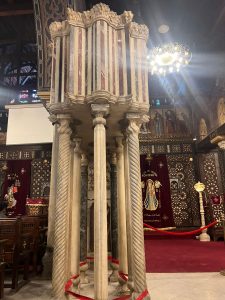
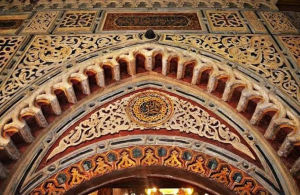 Due to the historical and archaeological importance of this church (small in size), it contains the caskets of the remains of major saints and martyrs. Therefore, visitors always come to receive the blessing and feel the atmosphere of faith.
Due to the historical and archaeological importance of this church (small in size), it contains the caskets of the remains of major saints and martyrs. Therefore, visitors always come to receive the blessing and feel the atmosphere of faith.
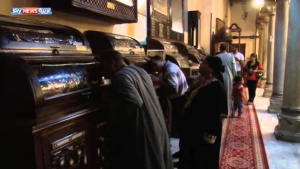
The Church of Abu Serga
As we mentioned in the journey of the Holy Family, when the Virgin Mary fled with her son and Joseph the carpenter to Egypt to escape Herod’s plot to kill the Messiah, they found refuge in Egypt until Herod’s death. In Egypt, they hid in many places, including a cave in Old Cairo, where they stayed for three months. This cave contained a sacred well from which the Virgin Mary and Jesus drank. In the early 5th century AD, a church was built on the site of this cave and named the Church of Saint Abu Serga.
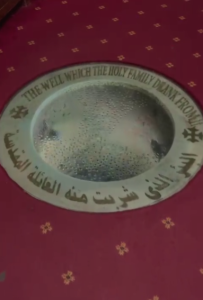
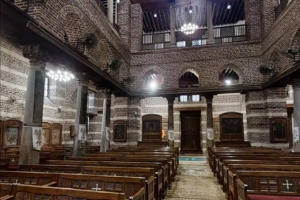
Why is it called the Church of Abu Serga?
The church is dedicated to the martyrs Sergius and Bacchus. They were commanders in the Roman army who refused to participate in pagan rituals. As a result, they were subjected to various tortures, including being stripped and dressed in women’s clothing to mock them. However, they remained steadfast in their faith and were eventually martyred. They became icons of martyrdom in the Christian faith, and this is why the church is named after Abu Serga, which refers to the martyrs Sergius and Bacchus.
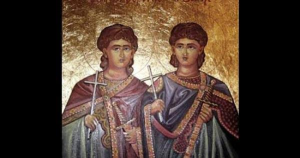
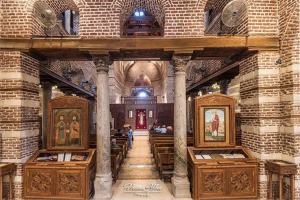
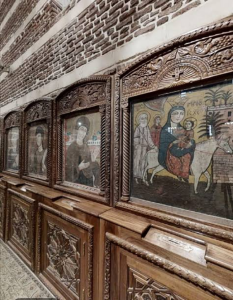
The Church of Saint George
Saint George, often referred to as the “Prince of Martyrs,” endured one of the longest and most brutal martyrdoms, lasting over seven years. This has earned him the title of “Father of Martyrs” and he is renowned for his fast response to the prayers of Christians. As a result, he is one of the most revered martyrs in Christianity. In Egypt alone, there are over 137 churches dedicated to Saint George in his honor. A well-known Christian story tells of a dragon that terrorized a village, demanding a virgin as a sacrifice to prevent the village from being burned. When it was the princess’s turn, Saint George arrived on horseback, spear in hand, and slayed the dragon, saving the village. This iconic image of Saint George slaying the dragon is depicted in churches around the world.
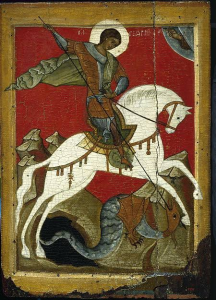 The Church of Saint George was built in 684 AD. One of the most distinctive features of this church is the torture chamber located in the basement. In this chamber, we find some of the most infamous torture devices used by the Roman Empire against Egyptian Christians. Among these instruments are the “hambazin,” a particularly cruel device, and wooden crosses with thick metal nails that were driven into the flesh and bones of Christians who were crucified in the desert. There is also a metal chain that is said to have been used to torture Saint George.
The Church of Saint George was built in 684 AD. One of the most distinctive features of this church is the torture chamber located in the basement. In this chamber, we find some of the most infamous torture devices used by the Roman Empire against Egyptian Christians. Among these instruments are the “hambazin,” a particularly cruel device, and wooden crosses with thick metal nails that were driven into the flesh and bones of Christians who were crucified in the desert. There is also a metal chain that is said to have been used to torture Saint George.
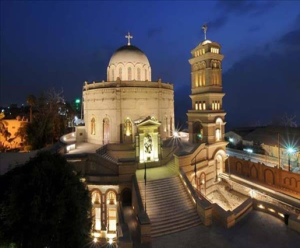

Reason for the Greek Flag in the Church
At the entrance of the church, there is a mosaic depicting Saint George, the Greek Orthodox Patriarch, along with side images of the President of Greece and his wife. This is because the Greek government restored and renovated the Church of Saint George, especially after a major fire that severely damaged it over 120 years ago, early in the 20th century. As a result, we find this image and the Greek flag flying at the main entrance of the church.
